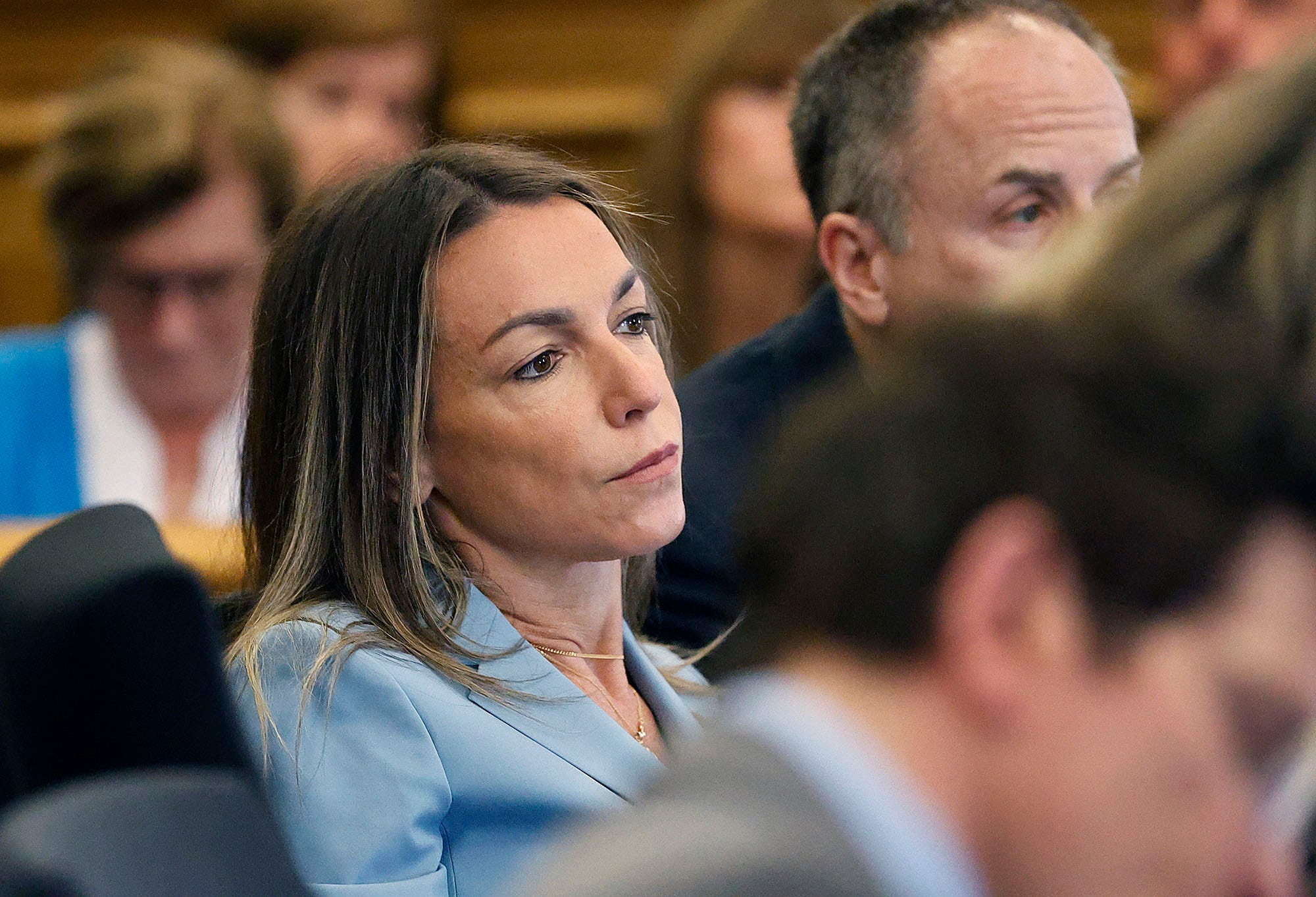Karen Read's Retrial: Her Own Words the Key?
Karen Read Retrial: Her Words Under Scrutiny
A Trial Revisited: Setting the Stage
The courtroom doors have swung open once more, and the air is thick with anticipation. The second trial of Karen Read, accused of the murder of her boyfriend, Boston Police Officer John O'Keefe, has officially begun. As the prosecution and defense lock horns again, the central question remains: did Karen Read intentionally kill John O'Keefe, or is she the victim of a massive cover-up? The stakes are high, and the truth hangs precariously in the balance.
The Charges: What Karen Read Faces
Let's recap what Karen Read is accused of. She's facing some serious charges stemming from the events of that fateful night in 2022:
- Second-degree murder
- Manslaughter while operating a vehicle under the influence
- Leaving the scene of an accident
The prosecution's narrative paints a picture of Read intentionally striking O'Keefe with her SUV, leaving him to die in the snow. On the other hand, the defense argues a vastly different scenario, one involving a conspiracy and a potential cover-up to protect others involved. This trial is far from a simple open-and-shut case.
The Prosecution's Ace: Read's Own Statements
Here's where things get interesting. The prosecution is banking on Karen Read's own words to convict her. Think about it: what you say can be used against you in a court of law. But how damning are these words? What exactly did she say that could seal her fate? That's the million-dollar question, isn't it?
Delving into the Words: What Could They Be?
While the specifics of Read's statements haven't been fully laid out in the initial reporting, we can speculate that the prosecution might be focusing on:
- Statements made to police immediately after the incident
- Conversations with friends or family leading up to or following O'Keefe's death
- Potentially contradictory statements that raise suspicion
The power of a statement lies in its context and interpretation. The prosecution will likely try to paint Read's words in the most incriminating light possible.
The Defense's Stance: Reasonable Doubt is the Name of the Game
The defense is pulling no punches, characterizing the case as "the definition of reasonable doubt." This is a bold statement, suggesting that the evidence against Read is weak and circumstantial. Their strategy will likely revolve around poking holes in the prosecution's narrative and presenting alternative explanations for O'Keefe's death.
Unpacking "Reasonable Doubt": What Does it Mean?
In legal terms, "reasonable doubt" means that jurors can't convict if they have significant uncertainties about whether the defendant committed the crime. The defense's job is to plant seeds of doubt in the jurors' minds. Could someone else have been responsible? Was the evidence mishandled? These are the questions they'll want the jury to consider.
The Conspiracy Theory: A Shadowy Web of Allegations
The defense's most controversial argument centers around a conspiracy theory. They allege that O'Keefe was killed inside the Albert home and then moved outside to frame Read. This involves accusing several individuals, including law enforcement officers, of participating in a cover-up. This is a high-stakes gamble, as it requires convincing the jury that multiple people are lying.
The Albert Home: Ground Zero for Controversy
The Albert home plays a pivotal role in the defense's theory. If they can prove that O'Keefe was injured or killed inside the house, it could significantly undermine the prosecution's case. This will likely involve intense scrutiny of forensic evidence and witness testimonies. The atmosphere surrounding the Albert home is charged with suspicion and unanswered questions.
The Role of Forensics: Science Under the Microscope
Forensic evidence will be crucial in this trial. Things like blood spatter analysis, tire track evidence, and the medical examiner's report will be closely examined. Both sides will likely bring in expert witnesses to interpret the data in their favor. It's a battle of the experts, each side trying to convince the jury of their interpretation.
Contradictory Findings: Fueling the Doubt
The defense has already pointed to alleged inconsistencies and mishandling of forensic evidence in the first trial. If they can demonstrate that the evidence was compromised or misinterpreted, it could cast serious doubt on the prosecution's claims. The integrity of the evidence is paramount.
The Media Circus: Public Opinion and the Trial
This case has garnered immense media attention, and public opinion is deeply divided. The media coverage can influence jurors, consciously or unconsciously. It's a delicate balance to ensure a fair trial in the face of such intense scrutiny. The court of public opinion can be a powerful force, but it shouldn't dictate the outcome of the trial.
Battling for Hearts and Minds: The Power of Narrative
Both the prosecution and the defense are trying to shape the narrative surrounding the case. The prosecution wants to portray Read as a jealous and volatile girlfriend who intentionally killed O'Keefe. The defense wants to portray her as a victim of a corrupt system. The side that controls the narrative may have a significant advantage.
The Jury's Task: Weighing the Evidence and Delivering Justice
Ultimately, the fate of Karen Read rests in the hands of the jury. They must weigh the evidence presented by both sides, assess the credibility of the witnesses, and determine whether the prosecution has proven its case beyond a reasonable doubt. It's a weighty responsibility, and their decision will have profound consequences.
A Quest for Truth: The Pursuit of Justice
The justice system is designed to uncover the truth and deliver a fair verdict. This trial is a testament to that process, even with all of its complexities and imperfections. The hope is that the jury will be able to sift through the conflicting evidence and arrive at a just conclusion. The pursuit of justice is a long and arduous journey, but it's a journey worth taking.
The Impact on the Community: A Case That Divides
The Karen Read case has deeply impacted the community, particularly in Canton, Massachusetts. It has strained relationships, fueled distrust, and raised serious questions about the integrity of law enforcement. Regardless of the outcome of the trial, the scars of this case will likely linger for a long time. The community is fractured, and healing will take time.
Rebuilding Trust: A Long and Difficult Road
Restoring trust in the justice system and law enforcement will be a major challenge in the aftermath of this trial. Transparency, accountability, and a willingness to address the concerns raised by the defense will be essential. The process of rebuilding trust must begin with acknowledging the pain and divisions caused by this case.
The Future of the Case: What Happens Next?
The retrial is just beginning, and it's impossible to predict the outcome. The legal proceedings will likely be lengthy and contentious. Depending on the verdict, there could be appeals, further investigations, and continued media scrutiny. The Karen Read case is far from over.
Conclusion: The Pursuit of Truth Continues
Karen Read's retrial marks another chapter in a complex and emotionally charged case. With the prosecution hinging on Read's own words and the defense claiming reasonable doubt and a vast conspiracy, the jury faces a significant challenge. This trial is not just about the fate of one individual; it's about the pursuit of truth, the integrity of the justice system, and the impact of a crime on a community. Only time will tell what the final verdict will be, but the quest for justice continues.
Frequently Asked Questions
Here are some frequently asked questions about the Karen Read case:
- What evidence does the prosecution have against Karen Read?
The prosecution's case relies on forensic evidence, witness testimonies, and statements made by Karen Read that they believe implicate her in John O'Keefe's death. They argue that Read intentionally struck O'Keefe with her SUV and left him to die in the snow.
- What is the defense's main argument in the Karen Read case?
The defense argues that Karen Read is innocent and that John O'Keefe was killed inside the Albert home as part of a police cover-up. They claim the evidence was mishandled and that Read is being wrongly accused.
- What is the significance of the Albert home in this case?
The Albert home is central to the defense's conspiracy theory. They allege that John O'Keefe was injured or killed inside the house and then moved outside to frame Karen Read. Forensic evidence related to the house is therefore critical.
- Why is Karen Read having a second trial?
Karen Read is undergoing her first trial for the alleged murder of John O'Keefe, this content refers to the ongoing court case and coverage.
- How can I follow the Karen Read trial and stay informed?
Major news outlets, like the one mentioned in the original content, are providing live blogs and ongoing coverage of the Karen Read trial. You can also follow legal experts and commentators on social media for analysis and updates.

